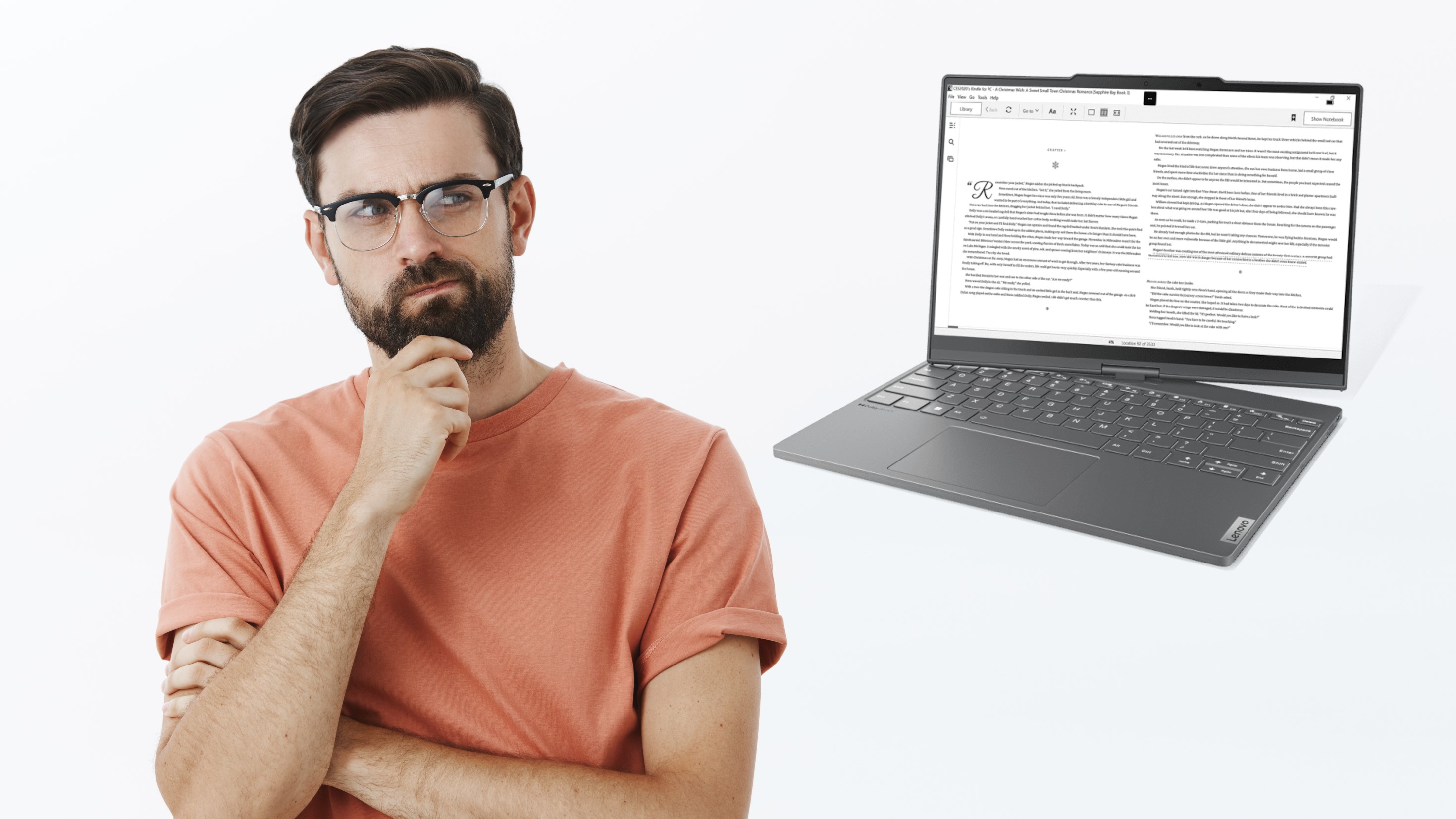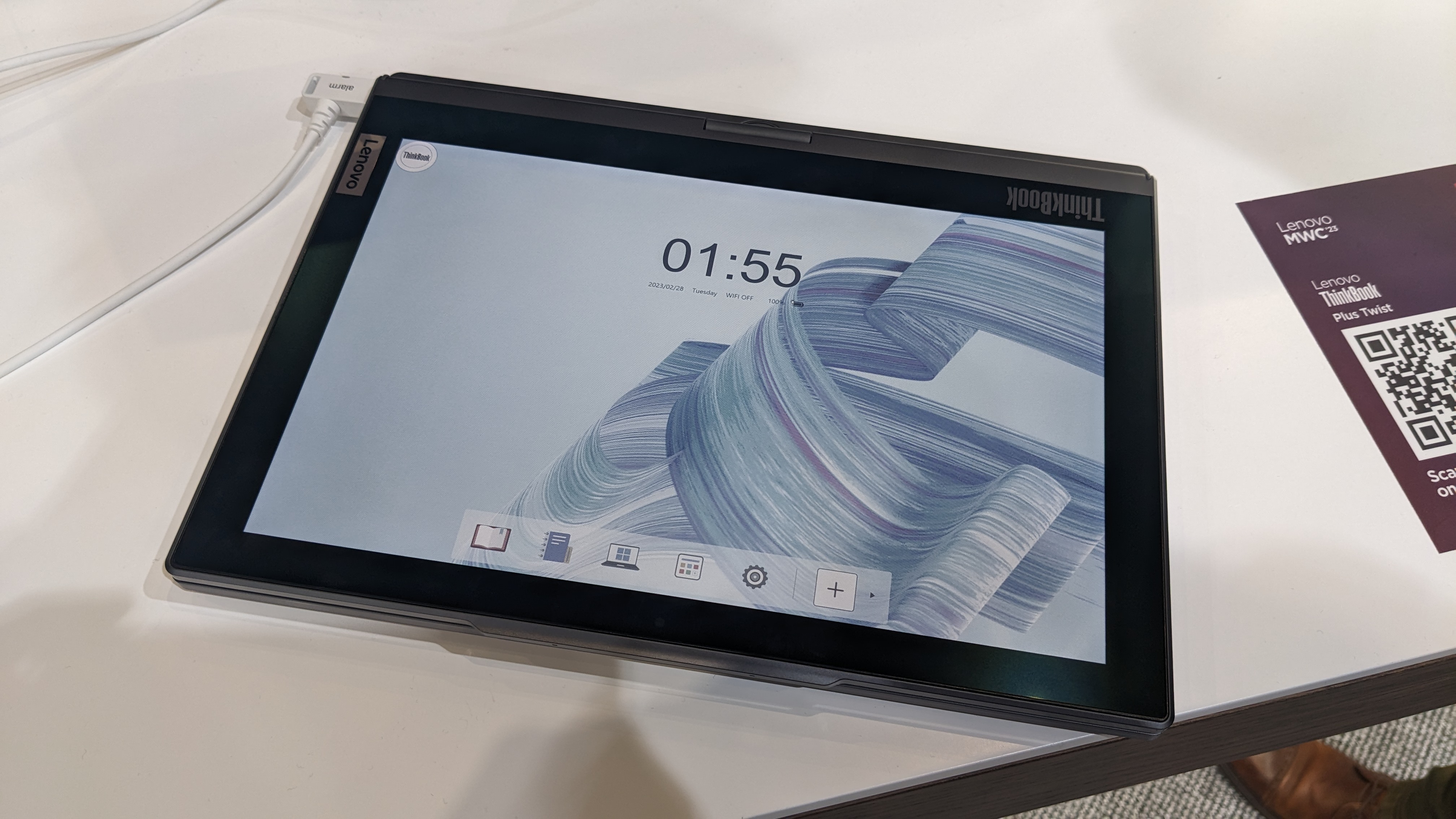
We’re filling out our CES 2025 prediction bingo cards at TechRadar right now, and I’m going to lose - because mine just has 25 boxes that all say ‘new Lenovo ThinkBook Twist’.
Yeah, I’m probably not getting what I want from Santa for CESmas this year, which is the return of Lenovo’s boldest (and weirdest) laptop design, the ‘twistable’ ThinkBook. What that basically means is that the display hinge is mounted in the exact center of the panel base, and can rotate on an axis - letting you spin the screen around and ‘close’ the lid to turn it into a tablet.
We reviewed the old ThinkBook Twist way back in 2013 and thought it was pretty decent, even though today the form factor has been made effectively redundant by 360-degree hinges for an easier and more intuitive switch into ‘tablet mode’. But that’s not the one I really want, no: I want a new-and-improved version of the award-winning ThinkBook Plus Twist I saw at MWC 2023, which had displays on both sides of the lid: a conventional OLED touchscreen, and a full-color E-Ink panel on the reverse.
Weird and wonderful
I know, this is an extremely silly design for a laptop at first glance. I’m not here to dispute that; watching Windows 11 run at about four frames per second on an E-Ink display was a bizarre experience, even if it did technically function fine.
But E-Ink has fantastic potential as an alternative to more power-hungry (and therefore less environmentally damaging) display types. It’s also gentler on the eyes, and works great for any activity that doesn’t demand a high refresh rate; Lenovo calls spinning the display around to use the E-Ink panel as the primary screen ‘typewriter mode’, which as a writer I find strangely endearing.

Of course, a more practical use for this sort of external E-Ink display is to display information while the laptop is in sleep mode with the lid down; since E-Paper panels only require electricity when they’re changing what appears on the screen, it can show you the time, battery life, local weather, notifications and more without you even needing to open the laptop up - and all while using virtually no power.
The future of E-Ink
In ‘standard mode’ with the lid open and the OLED display facing you, the ThinkBook Plus Twist just feels like an ordinary - though fairly premium - Lenovo laptop, capable of doing everything you’d expect. But when flipped into typewriter mode, that power-guzzling OLED panel shuts off, significantly boosting your battery life for lengthy writing stints away from a wall outlet.
I want to see more laptop makes - and the tech industry as a whole - commit more to the electronic paper format. E-Ink was revolutionary, but since its debut, it’s stagnated somewhat, largely relegated to overpriced Kindles.
Yet it has such potential: I can envisage many use cases beyond simple handheld devices. Every time I drive into a certain nearby city after dark, I get positively flashbanged by an enormous LED billboard that I loathe with a deep, fiery passion. But if that billboard was made using E-Paper, it would not only be less blinding (thus making the road safer and reducing local light pollution) but it would also use less electricity. If more tech companies take the time and effort to invest in this technology’s improvement, that could become a reality.







